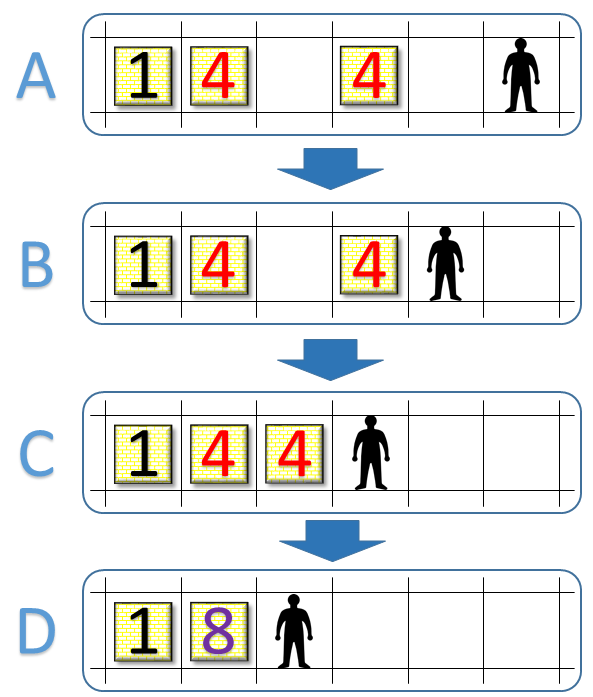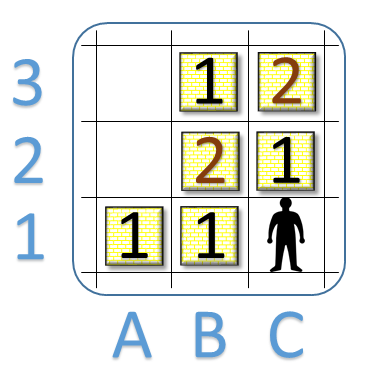

|
PERSONAL ANNOUNCEMENT: Dear Readers, I just wanted to share with you some news I'm incredibly excited about: Some of you, who know me personally, know that in addition to inventing riddles and doing Data Science research I also write fiction, mainly science fiction, and that my work has occasionally received some awards. Well, after more than 10 years of work (longer than the entire existence of Using your Head is Permitted!) I've finally released my long-in-the-making, first science fiction novel, Valkyries. It's now available as a Kindle eBook, downloadable from Amazon.com. The book can be read on any device (laptop, tablet, mobile phone, Kindle reader, etc.) with the free Kindle app. Early reviews show that readers are loving it. I hope you will, too. The book itself costs $2.99. I'm sorry about that, but it's the lowest Kindle allowed me to set it. Do enjoy, and do tell your friends about it. Any feedback is, of course, most welcome.
Best, This month's riddle is an original of mine. Two of my favourite computer games are 2048 and Sokoban. We already had one riddle dedicated to the former. This month, allow me to introduce my very own mash-up of these two games. I call it Soko-2048-ban. The game of Soko-2048-ban is played on an infinite, two dimensional board with integer coordinates. Each point on the board begins either empty or with a box whose value is "1". In total, there are 2n such boxes, for some positive integer n. In addition, in one of the empty positions there is a "worker". The player controls the worker, and can make it go one step in one of the directions left, right, up and down at every move. The worker has three distinct types of actions that it can perform as it is stepping:
To exemplify this, consider the following figure.

Figure A, at the top, shows a small portion of the infinite board at some intermediate state of the game. The worker is in the right-most position depicted, and to its left are, in order, an empty position, a position with a box whose value is "4", followed by another empty square, another box with a value of "4", and, last, a box whose value is "1". Suppose, now, that the worker tries to move, repeatedly, to the left. After one step, it will have arrived to the position depicted in Figure B. The worker has moved into the adjacent empty position and no other change occurred on the board. After another step to the left, it will have pushed the box of value "4" closest to it into the next position over. This is shown in Figure C. Lastly, in Figure D, another move to the left compacts the two boxes of value "4" into a single box of value "8". The worker can at this point no longer move further to the left, because it cannot push the box of value "8" into the box of value "1". Only boxes of identical values can be compacted into each other. The object of the game is to compact all the boxes, which were originally of value "1", into a single box of value 2n. This wins the game. Winning the game requires careful planning. Consider, for example, the figure below, which depicts a possible position in a game that started with 8 boxes.

If the worker, at this point in position C1, tries to move left and compact the two boxes of value "1" into each other, it will have by this lost the game, as no sequence of moves following this can lead to a win. (Try finding a move sequence that does solve the game from this position!)
This month's question: As always, prove your answer. |
List of solvers:Lin Jin (1 April 14:47)Uoti Urpala (2 April 00:22) Qiuyu Ren (2 April 23:43) Alexander Ruff (3 April 13:39) Harald Bögeholz (4 April 08:55) JJ Rabeyrin (15 April 06:52) Radu-Alexandru Todor (15 April 23:13) Oscar Volpatti (29 April 17:10) Itsik Horovitz (30 April 07:14) Andreas Stiller (30 April 10:16) |
Elegant and original solutions can be submitted to the puzzlemaster at riddles brand.scso.com.
Names of solvers will be posted on this page. Notify if you don't want
your name to be mentioned.
brand.scso.com.
Names of solvers will be posted on this page. Notify if you don't want
your name to be mentioned.
The solution will be published at the end of the month.
Enjoy!